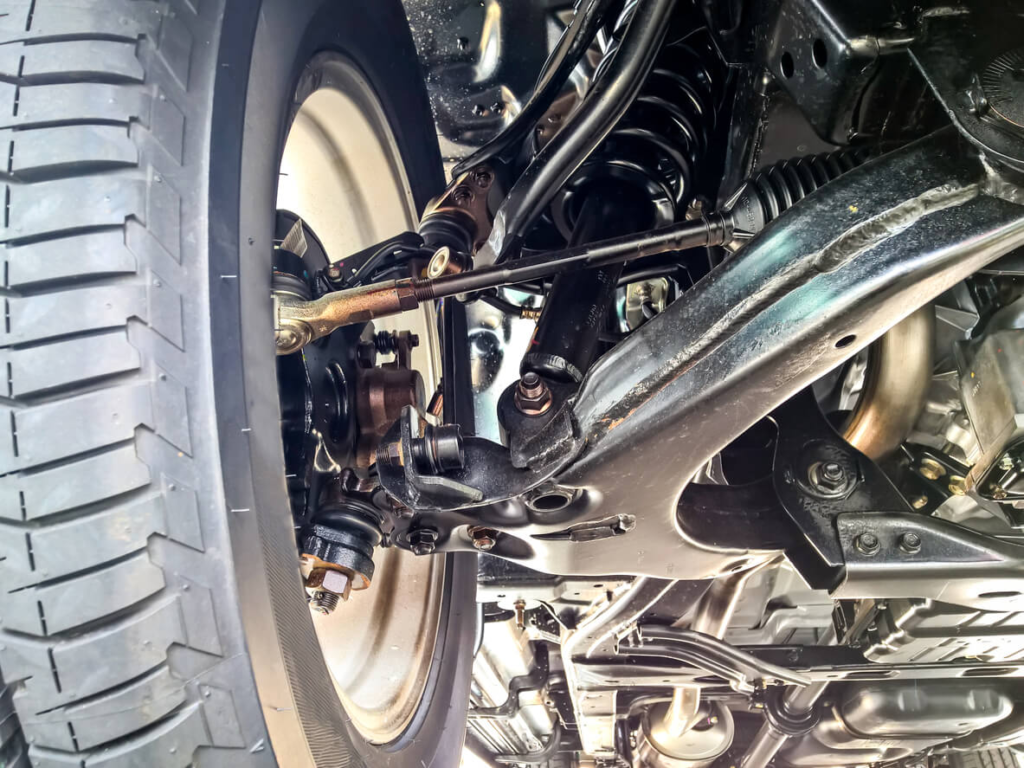A vehicle’s suspension system plays a crucial role in ensuring a smooth and comfortable driving experience. It helps absorb shocks from the road, maintains stability, and keeps your tires in proper contact with the surface. Over time, wear and tear on suspension components can lead to a rough ride, poor handling, and even safety issues. Regular maintenance can extend the life of your suspension system and keep your car performing at its best.

Key Components of a Car’s Suspension System
Your car’s suspension is made up of several parts that work together to ensure a smooth ride. The main components include:
- Shocks and Struts – These help absorb impacts and maintain vehicle stability.
- Springs – Support the vehicle’s weight and keep it balanced.
- Control Arms – Connect the wheels to the frame and help manage wheel movement.
- Ball Joints and Bushings – Reduce friction and allow for smooth articulation of suspension components.
Signs of Suspension Problems
A failing suspension system can cause various driving issues. Look out for these common warning signs:
- Rough or Bumpy Ride – If you feel every little bump on the road, your shocks or struts may be worn out.
- Uneven Tire Wear – Suspension problems can lead to improper alignment, causing premature tire wear.
- Drifting or Pulling to One Side – If your car pulls to one side while driving, it could indicate an issue with the suspension or alignment.
- Nose Diving When Braking – If your vehicle lurches forward when braking, your shocks or struts may need replacement.
- Leaking Fluid on Shocks or Struts – Visible fluid leaks can be a sign that your suspension components are failing.
How to Maintain Your Suspension System
To ensure a smoother ride and avoid costly repairs, follow these suspension maintenance tips:
- Regularly Inspect Suspension Components – Check for signs of wear, such as cracked bushings or leaking shocks.
- Rotate and Align Your Tires – Proper wheel alignment and tire rotation help distribute weight evenly and prevent uneven wear.
- Avoid Potholes and Rough Roads – Excessive impact from rough terrain can accelerate suspension wear.
- Replace Worn-Out Shocks and Struts – Most manufacturers recommend replacing these components every 50,000 miles or sooner if you notice performance issues.
- Check Your Power Steering System – A malfunctioning power steering system can put extra stress on suspension components, leading to handling problems.

When to Seek Professional Help
If you notice any issues with your suspension, it’s best to have your car inspected by a professional. Experience premium Porsche repair services to ensure your high-performance vehicle remains smooth and responsive on the road. Experts can diagnose and fix suspension problems before they lead to further damage or unsafe driving conditions.
A well-maintained suspension system enhances ride comfort, improves handling, and ensures your car’s longevity. Stay proactive with routine inspections and repairs to enjoy a safer and smoother driving experience.
Leave a Reply